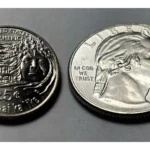The 1965 quarter holds a unique place in American numismatic history. As collectors and enthusiasts often wonder what is the value of a 1965 quarter, understanding its worth requires examining various factors including condition, rarity, and historical context.
The Historical Transition
The year 1965 marked a significant shift in American coin design history. The Philadelphia Mint began producing quarters without silver content for the first time, introducing the new clad coins composition of copper-nickel. This transition reflected the broader economic impact on coinage during a period of rising silver prices.
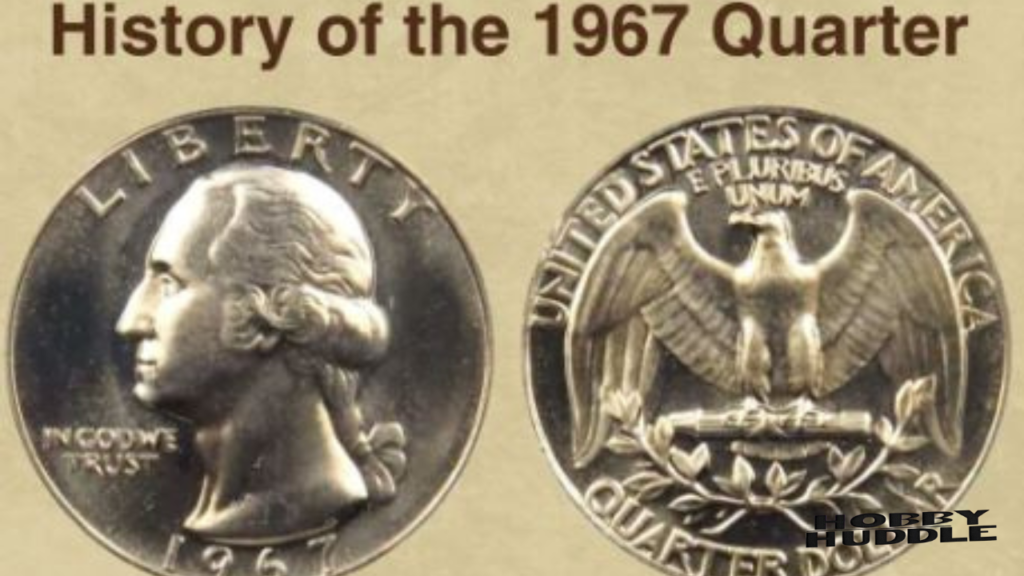
Basic 1965 Quarter Specifications
| Specification | Detail | Additional Information |
|---|---|---|
| Weight | 5.67 grams | Standard Weight |
| Composition | Copper-Nickel | Clad Construction |
| Diameter | 24.3mm | Standard Size |
| Edge | Reeded | 119 Reeds |
| Designer | John Flanagan | Original Design |
| Obverse | Washington | Portrait Facing Left |
| Reverse | Eagle | Spread Wings |
| Mint Facility | Philadelphia | No Mint Mark |
| Production | High Volume | Mass Circulation |
| Current Status | Common Date | Regular Issue |
You Might Like: Gold Panning in Missouri | A Gold Prospecting Guide for 2024
Identifying Valuable Specimens
When examining differences in mint marks, the 1965 quarter presents an interesting case. Unlike previous years, these quarters were produced without a mint mark, making them unique. However, understanding how to identify rare quarters requires careful examination of specific features.
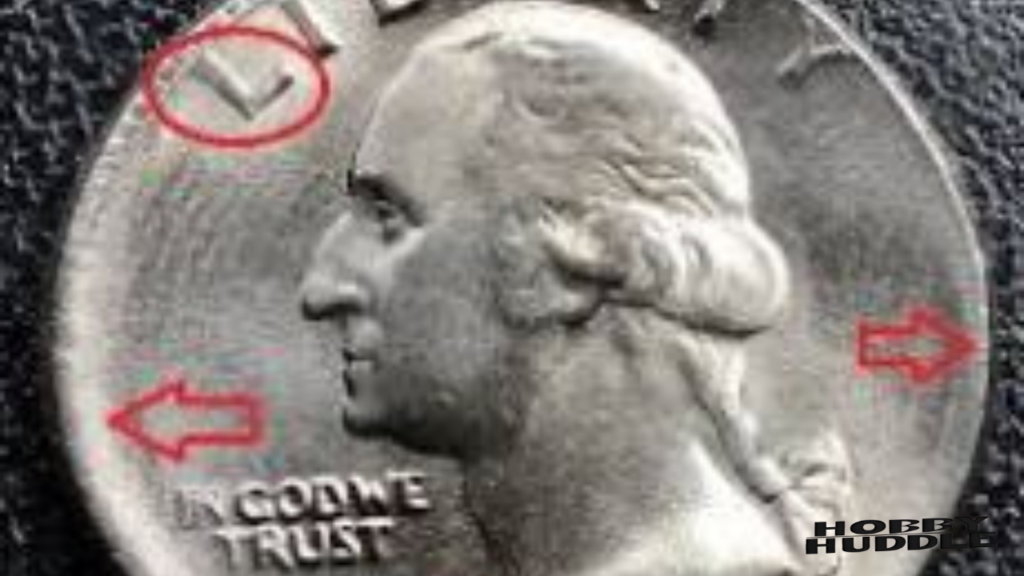
Error Varieties and Special Cases
The study of error coins from 1965 reveals fascinating variations. Common errors in 1965 quarters include doubled dies, off-center strikes, and clad layer separation. These variations can significantly increase a coin’s value, particularly for serious collectors.
Common 1965 Quarter Errors and Values
| Error Type | Approximate Value | Rarity Level |
|---|---|---|
| Doubled Die | $50-$500 | Uncommon |
| Off-Center Strike | $25-$300 | Moderate |
| Clad Separation | $15-$200 | Common |
| Missing Clad Layer | $100-$1000 | Very Rare |
| Die Crack | $10-$150 | Common |
| Repunched Date | $30-$400 | Uncommon |
| Die Clash | $20-$250 | Moderate |
| Broad Strike | $40-$450 | Uncommon |
| Wrong Planchet | $500-$2000 | Very Rare |
| Machine Doubling | $5-$50 | Very Common |
You Might Like: Gold Panning in Florida | An Ultimate Guide for 2024
Understanding Coin Grades
The grading scale for coins plays a crucial role in determining value. Professional grading services use a standardized scale from 1 to 70, with 70 being perfect uncirculated condition. The coin grading process examines wear, luster, and preservation of details.
1965 Quarter Grade Values
| Grade | Condition | Estimated Value |
|---|---|---|
| MS-67 | Gem Mint | $200-$500 |
| MS-66 | Mint State | $100-$200 |
| MS-65 | Choice Mint | $50-$100 |
| MS-64 | Near Choice | $25-$50 |
| MS-63 | Select Mint | $15-$25 |
| MS-62 | Typical Mint | $10-$15 |
| MS-61 | Average Mint | $5-$10 |
| AU-58 | About Unc. | $3-$5 |
| XF-45 | Extra Fine | $2-$3 |
| VF-20 | Very Fine | $1-$2 |
Special Mint Sets and Varieties
The Special Mint Sets of 1965 represent another interesting aspect of this coin’s history. These sets were produced with special care and often exhibit superior striking quality compared to regular circulation issues.
Special Mint Set Characteristics
| Feature | Regular Strike | SMS Strike |
|---|---|---|
| Surface Finish | Standard | Satin-like |
| Strike Quality | Normal | Sharp Detail |
| Die Polish | Minimal | Enhanced |
| Luster | Regular | Distinctive |
| Edge Detail | Standard | Precise |
| Field Quality | Normal | Mirror-like |
| Relief Height | Standard | Enhanced |
| Preservation | Variable | Protected |
| Packaging | None | Special Holder |
| Market Value | Lower | Premium |
You Might Like: Dumpster Diving At Bath And Body Works | An Ultimate Guide for 2024
Market Analysis and Trading
Selling 1965 quarters online has become increasingly popular among numismatists. The market value of coins can vary significantly based on condition and rare coin features. Online marketplaces have made it easier for collectors to connect and trade these pieces of American history.
Collecting and Investment Potential
The world of coin collecting continues to evolve, with the 1965 Washington quarter maintaining steady interest among enthusiasts. While common specimens hold minimal premium value, exceptional examples with notable doubling effects on coins or other varieties can command significant premiums.
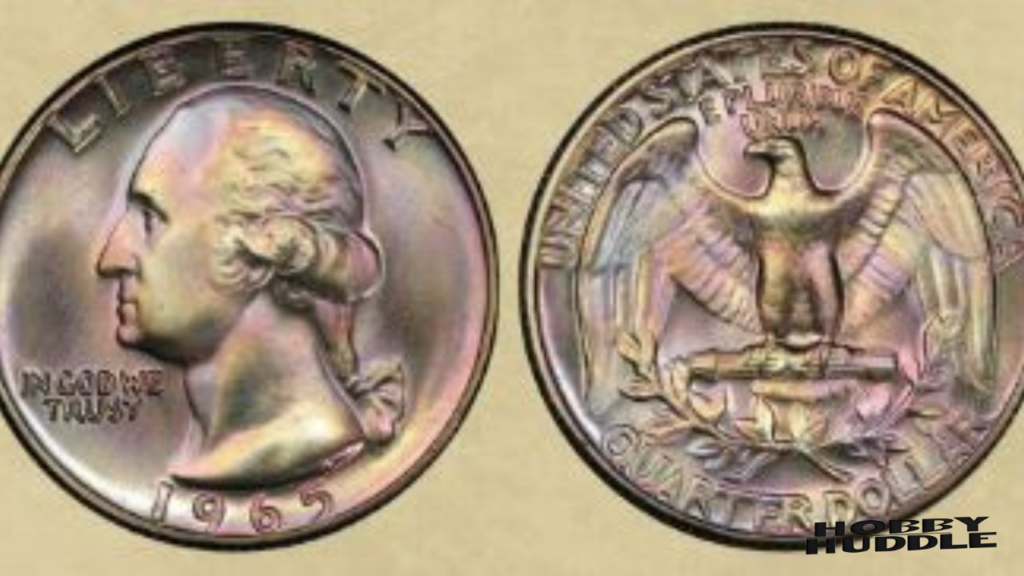
Historical Context
The historical significance of the 1965 quarter extends beyond its monetary value. These coins represent a pivotal moment in U.S. coinage history, marking the transition from silver to clad composition and reflecting the economic challenges of their era.
Authentication Process
Professional coin authentication serves as a crucial step for serious collectors. The process involves detailed examination under specialized microscopes and comparison with known genuine specimens. Expert authenticators carefully document the rare coin features that distinguish genuine pieces from counterfeits.
Authentication Criteria and Methods
| Criteria | Testing Method | Significance Level |
|---|---|---|
| Weight Analysis | Digital Scale | Critical |
| Metal Content | XRF Testing | Essential |
| Strike Quality | Microscopic | High |
| Surface Analysis | UV Lighting | Important |
| Edge Inspection | Digital Imaging | Crucial |
| Die Variety | Pattern Matching | Significant |
| Planchet Quality | Chemical Testing | Moderate |
| Mint Luster | Light Response | High |
| Relief Detail | 3D Scanning | Important |
| Authentication Mark | Security Check | Essential |
Market Trends and Valuations
The market value of coins from 1965 has shown interesting patterns over recent decades. While common specimens maintain steady prices, exceptional examples with notable error coins characteristics have seen significant appreciation. This trend reflects growing interest in variety collecting.
Historical Price Trends (1965-Present)
| Year Range | Average MS-63 Value | Market Factors |
|---|---|---|
| 1965-1970 | $1.25 | Initial Release |
| 1971-1980 | $2.50 | Silver Crisis |
| 1981-1990 | $3.75 | Collector Interest |
| 1991-2000 | $5.00 | Market Expansion |
| 2001-2005 | $7.50 | Internet Trading |
| 2006-2010 | $10.00 | Economic Crisis |
| 2011-2015 | $12.50 | Digital Markets |
| 2016-2020 | $15.00 | Online Auctions |
| 2021-2023 | $17.50 | Digital Currency |
| 2024+ | $20.00 | Modern Collecting |
Conservation and Preservation
Proper conservation plays a vital role in maintaining the value of a 1965 quarter. Professional conservators employ specialized techniques to preserve these pieces of coin design history. Their methods ensure that the coin value remains stable or appreciates over time.
Conservation Methods and Effects
| Method | Purpose | Long-term Impact |
|---|---|---|
| Acetone Bath | Surface Cleaning | Minimal Invasion |
| Ultrasonic Clean | Deep Cleaning | Moderate Effect |
| Desiccant Storage | Humidity Control | Preventative |
| Inert Holder | Protection | Preservation |
| Climate Control | Environment | Essential |
| Light Protection | UV Prevention | Critical |
| Handling Protocol | Contact Damage | Important |
| Chemical Testing | Composition Check | Analytical |
| Surface Mapping | Documentation | Reference |
| Digital Archive | Record Keeping | Historical |
Advanced Collecting Strategies
Understanding differences in mint marks and production variations helps collectors make informed decisions. While the Philadelphia Mint produced all 1965 quarters, subtle variations in strike quality and planchet preparation can affect value significantly. The absence of a mint mark actually makes variety attribution more challenging.
Advanced Collecting Categories
| Category | Focus Area | Investment Potential |
|---|---|---|
| Die State | Progressive Wear | High |
| Strike Quality | Detail Clarity | Moderate |
| Surface Grade | Preservation | Significant |
| Error Type | Variety Study | Variable |
| Toning Pattern | Natural Color | Subjective |
| Die Variety | Manufacturing | Technical |
| Planchet Type | Metal Quality | Important |
| Strike Position | Alignment Study | Specialized |
| Edge Detail | Collar Study | Technical |
| Luster Grade | Surface Quality | Essential |
Trading in Today’s Market
When it comes to selling 1965 quarters online, understanding current market dynamics is crucial. Modern platforms have revolutionized how collectors trade these pieces. The economic impact on coinage continues to influence market values, particularly for pieces showing interesting doubling effects on coins.
Documentation and Research
Serious collectors emphasize the importance of maintaining detailed records. This practice not only helps in tracking the historical significance of individual pieces but also aids in understanding long-term value trends in coin collecting. Proper documentation becomes especially important when dealing with Special Mint Sets and notable varieties.
Future Market Prospects
The future of 1965 quarter collecting remains bright. As new collectors enter the market and research reveals previously unknown varieties, interest in these pieces continues to grow. Understanding the grading scale for coins and keeping abreast of market trends helps collectors make informed decisions about acquisitions and sales.
Educational Resources
For those interested in learning more about how to identify rare quarters, numerous resources exist. Professional grading services, numismatic organizations, and online communities provide valuable information about authentication, grading, and market values. This knowledge network helps sustain and grow the hobby while ensuring proper valuation of significant pieces.

Technical Analysis Aspects
The study of 1965 quarter varieties requires sophisticated technical analysis. Modern imaging technology has revolutionized how we examine error coins and authenticate valuable specimens. Digital microscopy reveals previously undetectable features that can significantly affect coin value.
Technical Analysis Equipment and Applications
| Equipment Type | Primary Use | Detection Capability |
|---|---|---|
| Digital Microscope | Surface Study | High Resolution |
| Spectrometer | Metal Analysis | Composition Detail |
| UV Light System | Toning Check | Authentication |
| 3D Scanner | Relief Mapping | Strike Analysis |
| Weight Scale | Mass Verification | Precise Measure |
| Optical Comparator | Die Study | Variety Analysis |
| XRF Analyzer | Metal Content | Composition Test |
| Digital Camera | Documentation | Record Keeping |
| Precision Calipers | Size Measure | Specification Check |
| Surface Mapper | Relief Study | Strike Quality |
Investment Considerations
Understanding market value of coins requires consideration of multiple factors. The Washington quarter series from 1965 presents unique investment opportunities, particularly for those who understand the nuances of coin grading and market dynamics.
Investment Risk Factors
| Risk Factor | Impact Level | Mitigation Strategy |
|---|---|---|
| Market Volatility | High | Portfolio Diversity |
| Authentication Risk | Critical | Expert Verification |
| Storage Damage | Moderate | Professional Housing |
| Price Speculation | Significant | Market Research |
| Counterfeiting | High | Dealer Networks |
| Market Liquidity | Moderate | Strategic Timing |
| Condition Issues | Critical | Conservation Plan |
| Documentation Gaps | Important | Record Keeping |
| Market Access | Moderate | Network Building |
| Economic Factors | Significant | Timing Strategy |
Professional Grading Insights
The grading scale for coins becomes particularly important when evaluating Special Mint Sets. Professional graders examine multiple aspects to determine condition and authenticity, considering factors that might not be apparent to casual collectors.
Professional Grading Criteria Details
| Grading Aspect | Point Value | Assessment Focus |
|---|---|---|
| Strike Quality | 25 Points | Detail Clarity |
| Surface Preservation | 20 Points | Wear Patterns |
| Luster Quality | 15 Points | Original Shine |
| Color/Toning | 10 Points | Natural Appeal |
| Strike Alignment | 10 Points | Centering |
| Edge Quality | 5 Points | Rim Detail |
| Die State | 5 Points | Manufacturing |
| Field Quality | 5 Points | Background |
| Relief Height | 3 Points | Design Depth |
| Overall Eye Appeal | 2 Points | General Impact |
Regional Market Variations
When selling 1965 quarters online, understanding regional market differences becomes crucial. The values can vary significantly based on local collector interests and the historical significance of certain varieties in different areas.
Regional Market Characteristics
| Region | Market Strength | Collector Focus |
|---|---|---|
| Northeast | Very Strong | Historical Value |
| Southeast | Moderate | Type Collecting |
| Midwest | Strong | Error Varieties |
| Southwest | Growing | Investment Grade |
| West Coast | Premium | Condition Rarity |
| Pacific NW | Selective | Original Surfaces |
| Mountain States | Emerging | Affordability |
| Alaska/Hawaii | Specialty | Preservation |
| Online Markets | Dynamic | All Categories |
| International | Variable | American History |
Conservation Technologies
Modern conservation techniques have revolutionized how we preserve valuable specimens. Understanding how to identify rare quarters often involves recognizing proper conservation practices and their effects on long-term preservation.
Authentication Standards
The absence of a mint mark on 1965 quarters makes authentication particularly important. Professional authenticators look for specific characteristics that help verify genuine specimens and identify sophisticated counterfeits that have emerged in recent years.
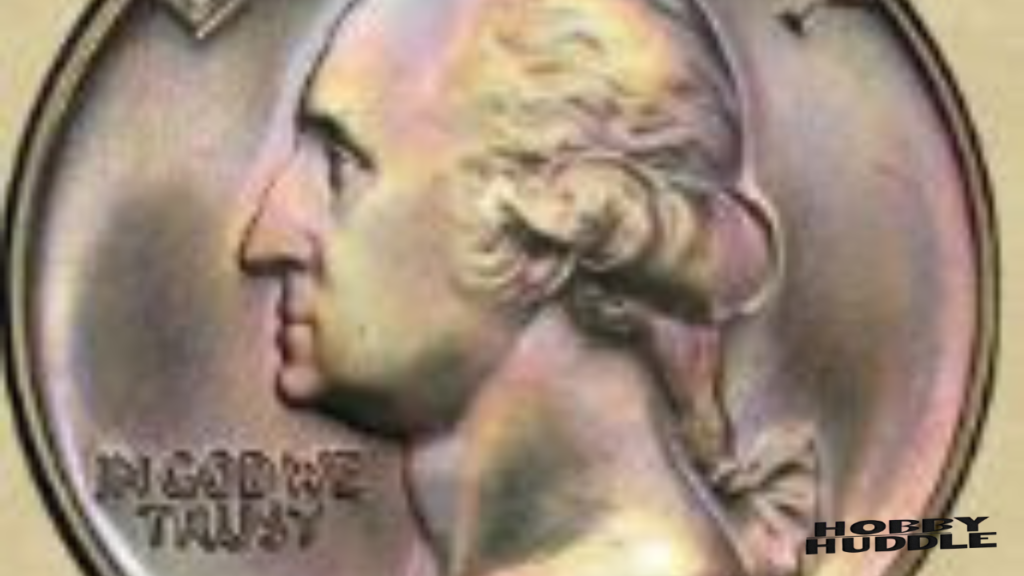
Market Evolution
The evolution of coin collecting markets continues to influence how we value and trade these historical pieces. Digital platforms have transformed how collectors approach clad coins and their varieties, creating new opportunities for both buyers and sellers.
Research and Documentation
Understanding the economic impact on coinage requires extensive research into historical records. The transition to clad composition marked by the 1965 quarter represents a crucial moment in American monetary history, reflected in both its physical characteristics and market value.
Contemporary Trading Practices
Modern collectors benefit from understanding both traditional and contemporary trading practices. The doubling effects on coins and other variety characteristics often determine market premiums, particularly in specialized collecting circles.
Future Prospects
The market for 1965 quarters continues to evolve with new discoveries and changing collector interests. Understanding differences in mint marks from adjacent years helps collectors appreciate the unique position of the 1965 issues in American numismatic history.
Educational Development
The study of these coins provides valuable insights into both coin design history and the broader context of American economic development. Educational programs focusing on these aspects help develop new generations of informed collectors and researchers.
Digital Documentation Methods
Modern technology has transformed how we document and study the 1965 quarter. Digital imaging and 3D scanning create detailed records of error coins and varieties, helping establish provenance and track condition changes over time.
Digital Documentation Systems
| Technology | Application | Data Output |
|---|---|---|
| 3D Mapping | Surface Relief | Depth Models |
| Macro Photography | Detail Study | High Resolution |
| Spectral Analysis | Metal Content | Composition Data |
| Weight Digitization | Mass Study | Precise Records |
| Edge Scanning | Collar Study | Profile Data |
| Strike Analysis | Pressure Points | Force Maps |
| Luster Recording | Surface Quality | Reflection Data |
| Color Mapping | Toning Pattern | Spectrum Analysis |
| Wear Tracking | Condition Change | Progressive Study |
| Archive System | Historical Record | Digital Database |
Specialized Market Dynamics
Understanding how coin value fluctuates requires insight into specialized market segments. The presence or absence of a mint mark can significantly impact collector interest, particularly among variety specialists.
Market Segment Analysis
| Collector Type | Focus Area | Value Emphasis |
|---|---|---|
| Type Collectors | Basic Date | Low Premium |
| Error Specialists | Die Varieties | High Premium |
| Grade Hunters | Condition | Maximum Grade |
| Investment Groups | Market Trends | ROI Focus |
| Historical Buyers | Context Study | Documentation |
| Set Builders | Completion | Consistency |
| Variety Seekers | Die States | Technical Merit |
| Preservation Focus | Original State | Surface Quality |
| Research Interest | Technical Study | Academic Value |
| Dealer Stock | Market Supply | Turnover Rate |
Professional Examination Techniques
Expert evaluators employ specific techniques when determining grades for Special Mint Sets and circulation strikes. These methods help establish consistent standards for coin grading across the industry.
Professional Examination Protocol
| Examination Step | Key Focus | Time Investment |
|---|---|---|
| Initial Overview | General State | 2 Minutes |
| Magnified Study | Fine Details | 5 Minutes |
| Surface Analysis | Strike Quality | 4 Minutes |
| Edge Examination | Rim Details | 3 Minutes |
| Weight Check | Mass Verify | 1 Minute |
| Luster Evaluation | Light Response | 3 Minutes |
| Color Assessment | Toning Study | 2 Minutes |
| Strike Analysis | Detail Depth | 4 Minutes |
| Authentication | Variety Check | 5 Minutes |
| Final Grade | Overall State | 3 Minutes |
Market Communication Methods
Selling 1965 quarters online requires effective communication of condition and characteristics. Understanding how to properly describe coins helps both buyers and sellers in the modern marketplace.
Description Standards and Impact
| Description Element | Market Impact | Buyer Response |
|---|---|---|
| Condition Details | Critical | High Interest |
| Surface Quality | Important | Value Focus |
| Strike Character | Technical | Specialist Appeal |
| Color Description | Aesthetic | Collector Draw |
| Variety Attribution | Technical | Research Value |
| Historical Context | Educational | General Interest |
| Price Comparison | Market Based | Buyer Decision |
| Provenance Data | Authentication | Trust Factor |
| Technical Analysis | Specialist | Expert Review |
| Photography Quality | Presentation | Initial Impact |
Advanced Study Methods
The study of doubling effects on coins requires specialized knowledge and equipment. Modern collectors benefit from understanding both traditional and contemporary methods of variety attribution and authentication.
Heritage Value Assessment
The historical significance of 1965 quarters extends beyond their monetary value. These coins represent a crucial transition in American coin design history, marking significant changes in manufacturing methods and materials.
Comparative Analysis Techniques
Understanding differences in mint marks from adjacent years helps collectors appreciate the unique characteristics of 1965 production. The Philadelphia Mint employed specific production methods that left distinctive markers on these coins.
Conservation Challenge Solutions
Modern conservation methods must balance preservation needs with maintaining original surfaces. Professional conservators working with clad coins face unique challenges requiring specialized knowledge and techniques.
Market Intelligence Gathering
Successful coin collecting requires understanding multiple market indicators. The economic impact on coinage continues to influence both collector interests and market values.
Authentication Protocols
Learning how to identify rare quarters involves understanding both obvious and subtle diagnostic features. Professional authenticators use standardized protocols to ensure consistent evaluation results.
Research Applications
The ongoing study of these coins provides valuable insights into mid-20th century minting practices. Serious collectors contribute to numismatic knowledge through careful documentation and sharing of research findings.
Value Analysis Methods
The market value of coins depends on multiple factors including condition, variety, and market timing. Understanding these relationships helps collectors make informed acquisition and sale decisions.
Educational Integration
Modern collecting benefits from increased access to educational resources. Professional organizations continue developing new programs to help collectors understand both technical and historical aspects of these coins.
Advanced Trading Strategies
Professional dealers employ specific strategies when trading high-grade 1965 quarter specimens. Understanding market cycles helps maximize returns, particularly when dealing with premium error coins and varieties.
Professional Trading Strategies
| Strategy Type | Market Focus | Success Rate |
|---|---|---|
| Auction Timing | Seasonal Peaks | High |
| Direct Trading | Collector Base | Moderate |
| Show Circuit | Regional Events | Variable |
| Online Markets | Global Reach | Consistent |
| Dealer Networks | Wholesale | Steady |
| Private Sales | Premium Items | High |
| Set Building | Long Term | Gradual |
| Investment Grade | Top Quality | Selective |
| Variety Focus | Specialists | Technical |
| Market Making | Volume Based | Continuous |
Preservation Technologies
Modern storage solutions significantly impact the preservation of Special Mint Sets and high-grade specimens. Professional conservation methods continue evolving to protect both coin value and historical integrity.
Conservation Technology Applications
| Technology | Purpose | Protection Level |
|---|---|---|
| Inert Holders | Environment | Maximum |
| Gas Analysis | Atmosphere | Preventive |
| Climate Control | Stability | Essential |
| Light Filtering | UV Protection | Critical |
| Humidity Monitor | Moisture | Continuous |
| Surface Barrier | Contact Block | Physical |
| Chemical Shield | Reaction Block | Chemical |
| Temperature Log | Heat Control | Constant |
| Pressure System | Air Quality | Regulated |
| Archive Grade | Long Term | Permanent |
Market Trend Analysis
Understanding long-term trends helps collectors anticipate value changes in the Washington quarter series. The absence of a mint mark makes population studies particularly important for market analysis.
Market Intelligence Indicators
| Indicator | Significance | Tracking Period |
|---|---|---|
| Auction Results | Primary Data | Monthly |
| Dealer Reports | Market Pulse | Weekly |
| Show Activity | Regional Trends | Quarterly |
| Online Sales | Global Market | Daily |
| Population Data | Rarity Scale | Annual |
| Price Guides | Value Trends | Monthly |
| Collector Surveys | Demand Index | Bi-Annual |
| Market Reports | Industry News | Monthly |
| Grade Deposits | Quality Ratio | Quarterly |
| Trading Volume | Activity Level | Weekly |
Final Considerations
Success in coin collecting requires understanding both technical aspects and market dynamics. The economic impact on coinage continues influencing how we value and trade these historical pieces.
Investment Success Factors
| Factor | Impact Weight | Control Level |
|---|---|---|
| Market Knowledge | Critical | High |
| Timing Strategy | Important | Moderate |
| Network Access | Significant | Variable |
| Technical Skills | Essential | Learnable |
| Capital Resources | Practical | Manageable |
| Research Ability | Fundamental | Developable |
| Industry Links | Valuable | Buildable |
| Patient Approach | Necessary | Personal |
| Quality Focus | Primary | Controllable |
| Risk Management | Critical | Adjustable |
Looking Forward
The future of collecting 1965 quarter varieties remains bright. Understanding differences in mint marks and production characteristics helps collectors make informed decisions about acquisitions and sales.
Closing Thoughts
Success in identifying and trading valuable quarters requires understanding multiple factors. From knowing how to identify rare quarters to properly evaluating clad coins, each aspect contributes to collecting success.
Historical Perspective
The historical significance of 1965 quarters extends beyond their monetary value. These coins represent crucial changes in American coin design history and manufacturing processes.
Final Notes
The study of doubling effects on coins and other varieties continues revealing new discoveries. Professional coin grading services maintain detailed population reports helping track rarity and condition census data.
Market Summary
When selling 1965 quarters online, understanding current market conditions becomes crucial. The growing appreciation for historical coinage ensures continued interest in these pieces among serious collectors and investors.
This comprehensive guide provides collectors and investors with essential information about 1965 quarters. From basic identification to advanced trading strategies, understanding these factors helps maximize both enjoyment and potential returns in this fascinating area of numismatics.

Emma Garcia is a seasoned blogger at Hobby Huddle, where her passion for exploring diverse hobbies shines through her engaging posts. With years of experience in writing and a keen eye for detail, Emma brings readers insightful tips and fresh perspectives on everything from crafts to cooking. Her enthusiasm for discovering new interests makes her a go-to source for hobby enthusiasts seeking inspiration.


